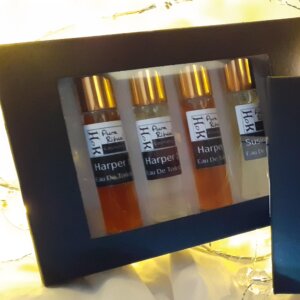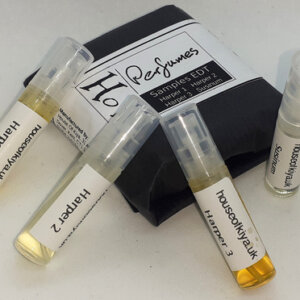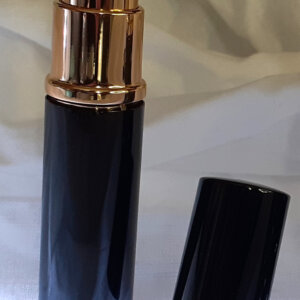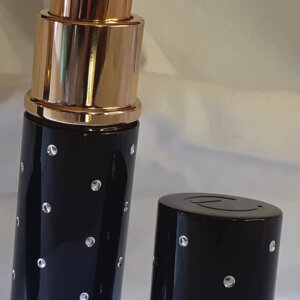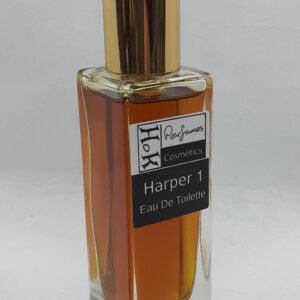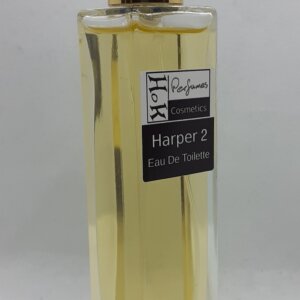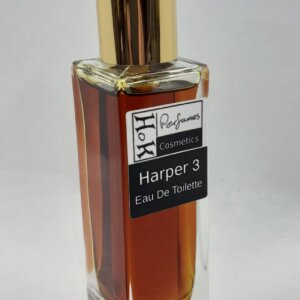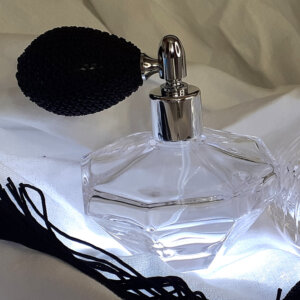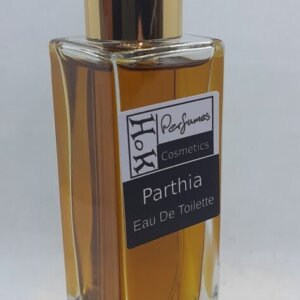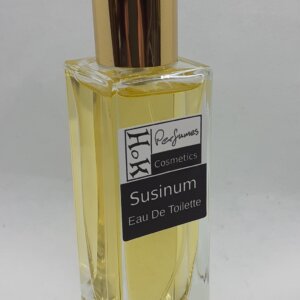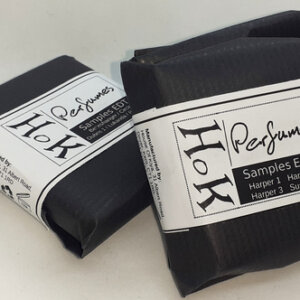Dover’s First Artisan Perfumer
My Perfume Research
I happen to have a love for anything ancient Egyptian. It is a love that I have had since discovering a book on ancient Egyptian literature in the school library when I was 10.
For many years I’ve burnt frankincense and myrrh incense, then some years back I explored the most famous of Egyptian incense; Kapet, or Kyphi as the Greeks called it. I first created a loose incense and then experimented making incense balls. Both of which were and still are utterly divine when the scent fills the air.
During the COVID-19 lock down my mind wondered into other areas of scent. Of course this covered essential oils and their properties and in my web travels I stumbled on a perfumery art course online. It seemed something was drawing me to it, mainly the next step in combining scent with the devotion to my deities, and with it being lain at my feet, I of course jumped at it – the gods had provided.
Taking a conscious step into noticing scent was mind opening. The world is full of sensory input overload and individual senses tend to be drowned. We then often take our senses for granted and its only when something really excites them in a big way do we notice.
The inspiration from exploring materials I thought I was familiar with inspired me to take something that I already love and explore what ancient Egypt had to offer in that context. Like all those who love that place there is an obvious theme in much of the art and literature of their love for exquisite scent, and they were famous in ancient times for their skill and quality. Further exploration led me to discovering a place called the ‘Perfume Laboratory’ at the temple of Edfu.
Exploring those translated recipes as well as contemporary recipes by obscure Greek historians I found dozens of curious recipes. The more promising; those being ones where the materials were reasonably well understood and importantly, were actually either not extinct or illegal to use (for many were and still are known for their narcotic properties), I physically made up.
Some required tweaks and all were highly unusual to modern tastes. It was quite clear that the ancient Egyptians and much of the Mediterranean in those times held various scents in higher regard than we currently do. Many of the resulting perfumes just didn’t quite hit our modern tastes and expectations. That is a bit sad really as from a historical recreation it would have been great to present them, but no. Not yet anyway.
That said I still have dozens more to explore and perhaps something might work from ancient times. In the end I thought I still need to share these wonderful scents, even the slightly odd ones because they are just so different.
The Story Of The Harper
Formulating a perfume is more than just throwing together a load of essential oils and hoping they smell nice. There is definitely an art, for each material has its own life cycle. On exposure to the air the organic molecules break down in different ways creating and developing new scents as various compounds decay and react with one another.
Think of it like painting with your nose. In art, colours merge to create new shades and colour, same with scent. In that case what scent picture should I create? It didn’t take long to work out an image to translate to scent.
At the start I mentioned a book an ancient Egyptian literature that inspired me. Over the years I’ve explored this literature and discovered a body of work called the ‘Songs of the Harper’ – a collection of love poetry that is so evocative that one particular poem instantly came to mind:
My god, my lover It is pleasant to go to the canal and to bathe in your presence I shall let you see my perfection in a garment of royal linen, wet and clinging. Then I'll go into the water at your bidding and I'll come out with a red fish Happy in my hands So come and look me over My love lies on yonder side of the canal Between is a crocodile, it waits on the bank Yet I'll go down to the water I’ll head into the waves My heart is brave on the water And the waves like land to my legs I embrace her and her arms open wide I am like a man in paradise Like someone overwhelmed with drugs I kiss her Her lips open and I am drunk without beer
‘Cairo love songs’, Simpson, William Kelly Ed. 1973. The Literature of Ancient Egypt, New Haven and London, Yale University Press
Therefore Harper 1 captures this poem through the initial herbaceous and floral aspect of the Nile, as it transforms over to strong sensual scent of jasmine and frankincense, and finally, as the poem descends into sensual imagery of this couple’s love so too does the scent with its sweet full bodied amber.
Harper 1 has all the elements of these wonderful perfumes, some ingredients of the original recipes due to modern safety limits and legality I had to substitute with modern materials that exhibit similar qualities. I have though tried to be as authentic as I can possibly be in picking materials that may have been known to ancient Egypt or within that part of the world now. There will always be some compromise after a few thousand years!
From the core of Harper 1, Harper 2 takes the top note of the core and removes the heavier amber for a fresh herbaceous and floral aspect. Conversely Harper 3 takes the core and with the heavier amber base adds a sweet citrus to it.
The Story Of Parthia
Long ago a king in a far flung corner of the Kingdom Of Babylon, in a country known as Parthia, a diplomatic party was sent to Egypt seeking the finest perfume by their king as it was known that was the place to go for such things. Not much is known about what was created by for them by the Egyptian perfumers; all we know is that it consisted of the most expensive and exotic materials available. The only thing really do know for sure is that it was documented to have the name The Royal.
Taking inspiration from Chyre perfumes, my understanding of previous research into late period ancient Egyptian perfumery, and suitable modern exotics materials I have created something at least in the spirit of those ancient perfumers. Perhaps too with some of the materials they possibly would have selected.
This is a rich, deep, and musky complex floral perfume available as an Eau de Toilette or a stronger Parfum.
-

‘Historicals Collection’ 10ml Gift Set
£35.00 Add to cart -

‘Historicals Collection’ Perfume Sample Pack
£10.00 Add to cart -

Black 5ml Hand Bag Atomiser
£15.00 Add to cart -

Dotty 5ml Hand Bag Atomiser
£15.00 Add to cart -

Gift Card
Price range: £5.00 through £100.00 Select amount This product has multiple variants. The options may be chosen on the product page -

Harper 1
Price range: £10.00 through £45.00 Select options This product has multiple variants. The options may be chosen on the product page -

Harper 2
Price range: £10.00 through £45.00 Select options This product has multiple variants. The options may be chosen on the product page -

Harper 3
Price range: £10.00 through £45.00 Select options This product has multiple variants. The options may be chosen on the product page -

Ocoto Shaped Atomiser 50ml
£25.00 Add to cart -

Parthia
Price range: £12.00 through £70.00 Select options This product has multiple variants. The options may be chosen on the product page -

Parthia Perfume Sample Pack
£3.00 Add to cart -

Susinum
Price range: £10.00 through £45.00 Select options This product has multiple variants. The options may be chosen on the product page -

The Complete Perfume Sample Pack
£15.00 Add to cart -

Zoom Perfume Introduction/Walkthrough
£0.00 Select options This product has multiple variants. The options may be chosen on the product page

